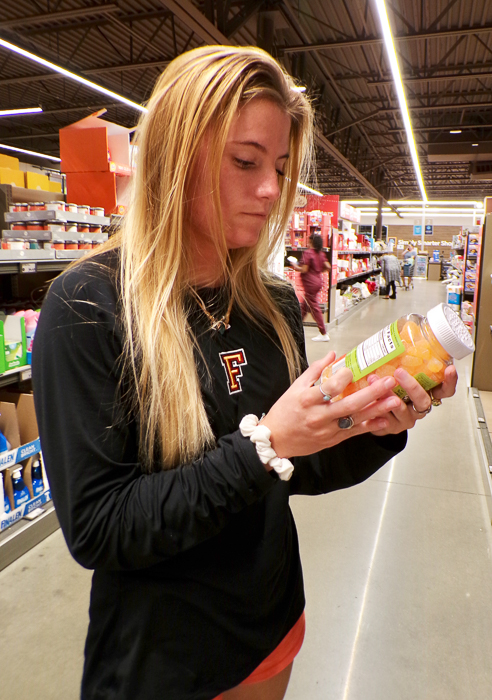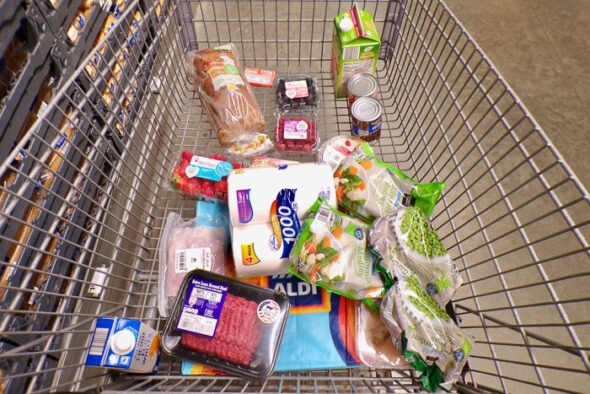By Chloe Smith
Universities and colleges are seeing more students struggle on campus as food insecurity becomes more common nationwide, which recent studies say could determine whether students stay in school or graduate.
“When college students don’t have access to food, the most detrimental thing we see happen is they leave school,” Madison Smith, pantry advisor and student affairs coordinator at the University of North Florida said.
A 2022 Public Health Nutrition study found that food-insecure college students were more than 40% less likely to graduate from college. These findings were more pronounced among food-insecure first-generation students, with less than half finishing their degree.
As the cost of living rises and wages remain stagnant, food insecurity- the lack of adequate food to meet one’s basic needs- is becoming a barrier that more and more college students cannot break through.
Some academic institutions see food insecurity rates of over 70% among their student body, a significantly higher rate than that of the general population.
“The dollar does not stretch quite as far as it has in the recent past,” Ashlie Empleo, program coordinator for the food pantry at Florida State College in Jacksonville said. “Our community and our students are feeling this effect and are having to make difficult choices in how to spend their money. Do they buy groceries or purchase a book for class?”
Increase of Visitors to Campus Food Pantries
The prevalence of food insecurity among college students in the United States is only growing. Universities and colleges across Northeast Florida are evidence of this through the rapidly increasing number of daily student visitors to campus food pantries like the FSCJ H.O.P.E Food Pantry.
“By year-end of 2021, we served 1,187 duplicated students, and as of today, Nov. 28, 2023, we have served 4,095 duplicated students,” Empleo said. “That is a 345% increase in two years.”
Similar data can be found at UNF, as about 2000 students currently visit their Lend-A-Wing Pantry each month, the most visitors the pantry has seen since its opening in 2012.
“This is a huge difference from when I came into my role as the pantry advisor in April of 2022, where we were only seeing about 30-35 student visits each day,” Smith said. “And now we see anywhere from 100-200 visits each day.”

Leading Causes and Effects of College Food Insecurity
Food insecurity for college students can lead to impacts far beyond hunger or dropping out of school.
“In other scenarios, students suffer in silence,” Smith said. “They don’t perform to the best of their ability in their courses, they skip classes to pick up extra work shifts, and their physical and mental health deteriorate because they aren’t eating healthful meals.”
Other adverse effects, such as a higher likelihood of developing poor psychosocial health, anxiety, depression, sleep deprivation, binge drinking habits, and more, also contribute to food-insecure students being at a significant disadvantage to their food-secure peers.
Although no one factor contributes to students experiencing insecurity with food, the most obvious would be the financial inability to afford groceries, whether because of limited financial aid, rising tuition costs, or expensive meal plans. Food-insecure students may also be financially independent, have to provide for more people than themselves, or have conflicts between work and school schedules.
Several more complex factors can also explain why college students may face hunger.
“It could be a lack of transportation to get to stores, inability to properly prepare healthful meals, whether that be no time, no access to a kitchen, or just not knowing how to cook, etc.,” Smith said.

Stigmas and Stereotypes of College Food Insecurity
Despite comprising a significant percentage of the U.S. food-insecure population, often food insecurity research overlooks college students primarily due to the stereotypes surrounding those who attend higher level education.
“The biggest factor that plays into college hunger being under-addressed is this stigma that you are choosing to go to college with the understanding of the financial responsibility,” Smith said. “So most change-makers have this idea that it’s a student’s fault that they can’t get groceries when the reality is the issue can go so much deeper than just not being able to afford groceries.”
In past decades, experiencing food insecurity in college was nearly a “right of passage,” so it is no surprise the issue remains hugely under-recognized.
“Historically speaking, people who went to college were of higher socio-economic status, and food security was a non-issue,” Empleo said. “As we have moved into a more modern world and the student population has diversified, there has been a delayed response to the totality of economic needs of today’s student.”
Actions to Take
While it is enormously the responsibility of universities and colleges to provide for their students facing hunger, some institutions are already scrambling to confront the crisis.
“Universities are already stretching their resources thin, and they need more support at the state and federal level to make sure their students, faculty, and staff have their basic needs met,” Smith said.
Individuals must voice their concerns to local, state, and federal leaders and support local food pantries, food banks, and non-profits.
Nonprofit organizations, such as The Simon’s House- based in St. Johns County- often seek better ways to serve college students directly but require more funding to take genuine action.
“I would love to have a food pantry at the college,” Simon, founder of The Simon’s House said. “I would love it because I hear the same old stories all the time. I have a dear friend of mine, Tammy. Her daughter is in Tallahassee. And that’s their biggest struggle, you know, is food.”
To learn more about college students’ food insecurity or locate a local food bank near you, visit https://www.feedingamerica.org/research/college-hunger-research.
To support The Simon’s House, visit https://the-simons-house.org/.



Be the first to comment on "Food-Insecure College Students 42% Less Likely to Graduate, Study Says"